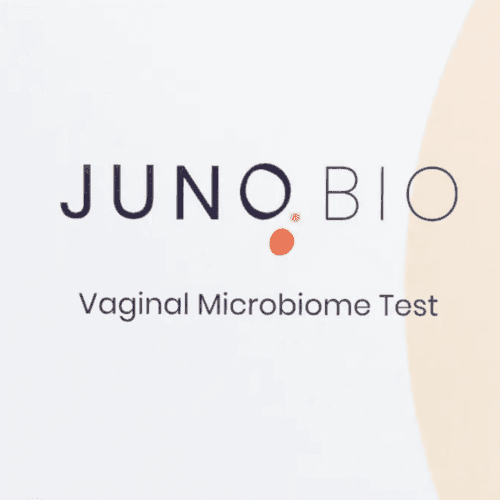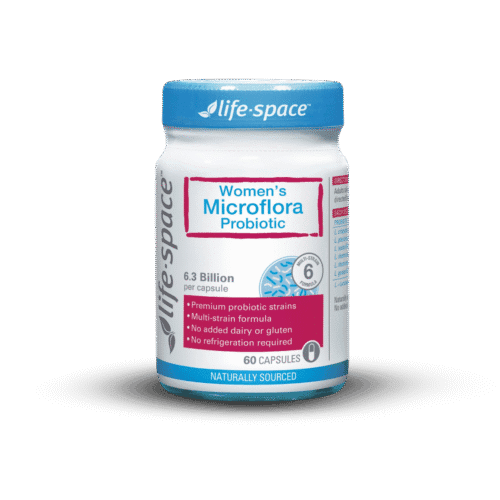The ‘boric acid is a biofilm buster’ line is mostly wishful thinking in bacterial vaginosis (BV). The most substantial evidence for boric acid and biofilms is in vitro, primarily for Candida, rather than for Gardnerella-dominant BV biofilms. Clinical data for BV are limited, mixed, and often complicated by co-treatments.
Boric acid is often recommended because it’s one of the few treatments available that is somewhat useful and antibiotic-free. Having a biofilm component in a BV treatment can increase efficacy, but calling boric acid a biofilm buster is rather optimistic. The evidence is weak. Worse still, boric acid isn’t particularly effective in treating BV. Overall, we give it 2 stars.
In our specialist clinic, we never recommend boric acid – it’s just not that useful, and we have much more effective options. And, with repeated use, boric acid can reduce the vagina’s natural defences, rather than build them up.
What the evidence actually shows
Candida biofilms: lab-based signal, not definitive clinical proof
Laboratory studies1 show boric acid inhibits Candida albicans growth, hyphal switching and early biofilm formation, and can be fungistatic/fungicidal depending on concentration and conditions. That’s mechanistically plausible for reducing biofilm propensity in Candida-driven infections, but it’s bench data, not in vivo biofilm clearance.
CDC guidelines recommend boric acid as a rescue option for azole-refractory or recurrent vulvovaginal candidiasis; however, these recommendations are based on clinical response/eradication rates, rather than a direct demonstration of biofilm disruption in vivo.
BV biofilms: weak support for boric acid
A major 2023 review2 notes that boric acid can inhibit biofilm formation by some non-vaginal pathogens in vitro, but did not reduce viability in established biofilms. Critically, there are no robust trials of boric acid alone for recurrent BV. Where it appears helpful, it’s usually as an adjunct to antibiotics. Efficacy is modest, and how long the effects will last is unclear.
Melbourne Sexual Health Centre’s guideline is blunt: intravaginal boric acid regimens “have not shown sustained benefit” for recurrent BV.
Trials often cited for “biofilm” don’t prove a biofilm effect
Small or retrospective studies report symptom/cure rates when boric acid is added after antibiotics, but they don’t measure biofilm. Effects may reflect pH-lowering or nonspecific antimicrobial stress rather than targeted disruption of biofilms.
A phase 2 trial of a boric-acid-based product showed only 50–59% early clinical cure, again without biofilm endpoints.
Better-supported BV biofilm strategies exist
If you want agents with actual evidence2 of BV-biofilm targeting, there are better options than the hope and a prayer of boric acid.
- Fluomizin (dequalinium chloride), which is an alternative to clindamycin and exhibits partial in vitro Gardnerella biofilm disruption3. These two have stronger BV-specific data than boric acid.
- Aunt Vadge’s BV Rescue and other BV pessaries contain EDTA, known to collapse biofilms.
- Astodrimer 1% gel – found across multiple trials, including recurrence reduction when used post-antibiotics.
Bottom line: boric acid is a weakling
- For Candida: boric acid shows in vitro anti-biofilm/anti-hyphal effects and is clinically useful in treatment-resistant cases, but we don’t have human data proving it “breaks Candida biofilms” in vivo.
- For BV: evidence2 that boric acid disrupts Gardnerella-dominated biofilms is weak. Clinical use is largely adjunctive, effects are modest, and durability is poor; guidelines explicitly note lack of sustained benefit. If your goal is BV-biofilm targeting, Astodrimer and Fluomizin have better evidence.
Boric acid and biofilms FAQ
Not convincingly. Most “biofilm buster” claims originate from in vitro data and primarily relate to Candida, rather than Gardnerella-dominant BV biofilms. Clinical BV studies are limited, mixed, and usually muddled by co-treatments.
Boric acid lowers vaginal pH and has non-specific antimicrobial effects, so symptoms can improve short term. That doesn’t prove biofilm disruption. When you stop, relapse is common because the underlying microbiome and epithelial metabolism have not been restored.
No. Lab studies show inhibition of Candida growth, hyphal switching and early biofilm formation, and clinically, it helps treatment-resistant cases. But human data proving in vivo biofilm clearance are lacking.
There’s no solid evidence of sustained benefit in recurrent BV. Where boric acid is helpful, it typically serves as an adjunct to antibiotics, and its effects are short-lived. Guidelines state that intravaginal boric acid has not shown sustained benefit for recurrent BV.
Yes, potentially. It maintains a low pH without feeding lactobacilli or promoting epithelial repair. In low-oestrogen or glycogen-depleted states, this can perpetuate a starved, unstable microbiome.
Astodrimer 1% gel (multiple trials, including reduced recurrence post-antibiotics) and dequalinium chloride (e.g. Fluomizin; as effective as clindamycin with demonstrated Gardnerella biofilm disruption) show stronger BV-specific evidence.
Rebuild the ecosystem: address low estrogen levels where appropriate, feed lactobacilli with suitable prebiotics (e.g., lactulose), and support the mucosal lipid barrier with well-tolerated oils. Reserve boric acid for short, clearly defined rescue courses only.
Boric acid can ease symptoms but is a weak option for BV biofilms. Evidence for Gardnerella-dominant biofilm disruption is poor, and long-term results are underwhelming. Choose treatments with stronger biofilm-targeting data and focus on restoring the vaginal microbiome.
References
- 1.De Seta F, Schmidt M, Vu B, Essmann M, Larsen B. Antifungal mechanisms supporting boric acid therapy of Candida vaginitis. Journal of Antimicrobial Chemotherapy. Published online November 19, 2008:325-336. doi:10.1093/jac/dkn486
- 2.Abbe C, Mitchell C. Bacterial vaginosis: a review of approaches to treatment and prevention. Front Reprod Health. 2023;5:1100029. doi:10.3389/frph.2023.1100029
- 3.Gaspar C, Rolo J, Cerca N, Palmeira-de-Oliveira R, Martinez-de-Oliveira J, Palmeira-de-Oliveira A. Dequalinium Chloride Effectively Disrupts Bacterial Vaginosis (BV) Gardnerella spp. Biofilms. Pathogens. Published online February 25, 2021:261. doi:10.3390/pathogens10030261








